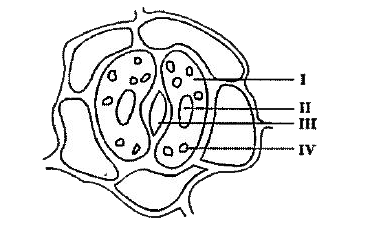Study the diagram of a open stomata marked with labels. Answer the following questions based on stomata.

The opening and closing of the stomatal pores depends upon:
A
oxygen
B
water in guard cells
C
temperature
D
concentration of CO2 in stomata
Text Solution
The correct Answer is:D
The opening and closing of stomata depend on the turgor pressure, caused by the osmotic flow of water in the guard cells. When the guard cells are turgid, they expand resulting in the opening of stomata. When the guard cells lose water, they become flaccid leading to stomatal closure
|
Updated on:21/07/2023
Related Playlists
Similar Practice Problems
- Question 1 - Select One
The opening and closing of the stomatal pore depends upon
AoxygenBtemperatureCwater in guard cellsDconcentration of CO2 on stomata - Question 1 - Select One
Opening and closing of stomatal pore depends on :
Aatmospheric temperatureBoxygen concentration around stomataCcarbon dioxide concentration around stomataDwater content in the guard cells - Question 1 - Select One
Opening and closing of stomata is due to
Ahormonal change in guard cellsBchange in turgo pressure of guard cellsCgaseous exchangeDrespiration - Question 1 - Select One
The opening and closing of stomata is regulated by
Aoxygen concentration in stomataBwater in guard cellsCtemperatureDCO2 concentration in stomata - Question 1 - Select One
Opening and closing of stomata is due to
Apressure of gases inside the leavesBchanges of turgor pressure in guard cellsCeffect of hormonesDtheir genetic constitution - Question 1 - Select One
Opening and closing of stomata is due to the
Ahormonal change in guard cells.Bchange in turgor pressure of guard cells.Cgaseous exchange.Drespiration

